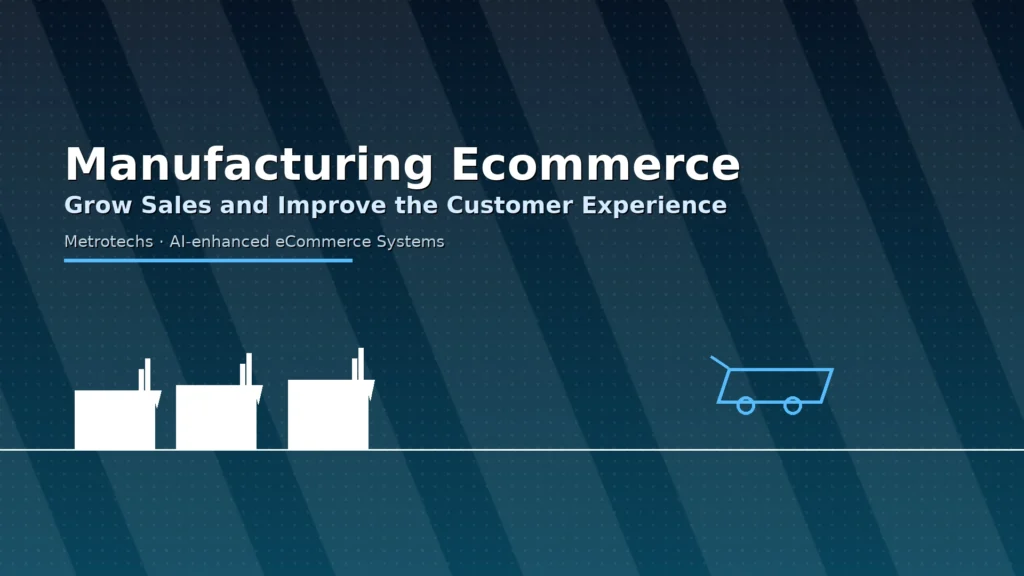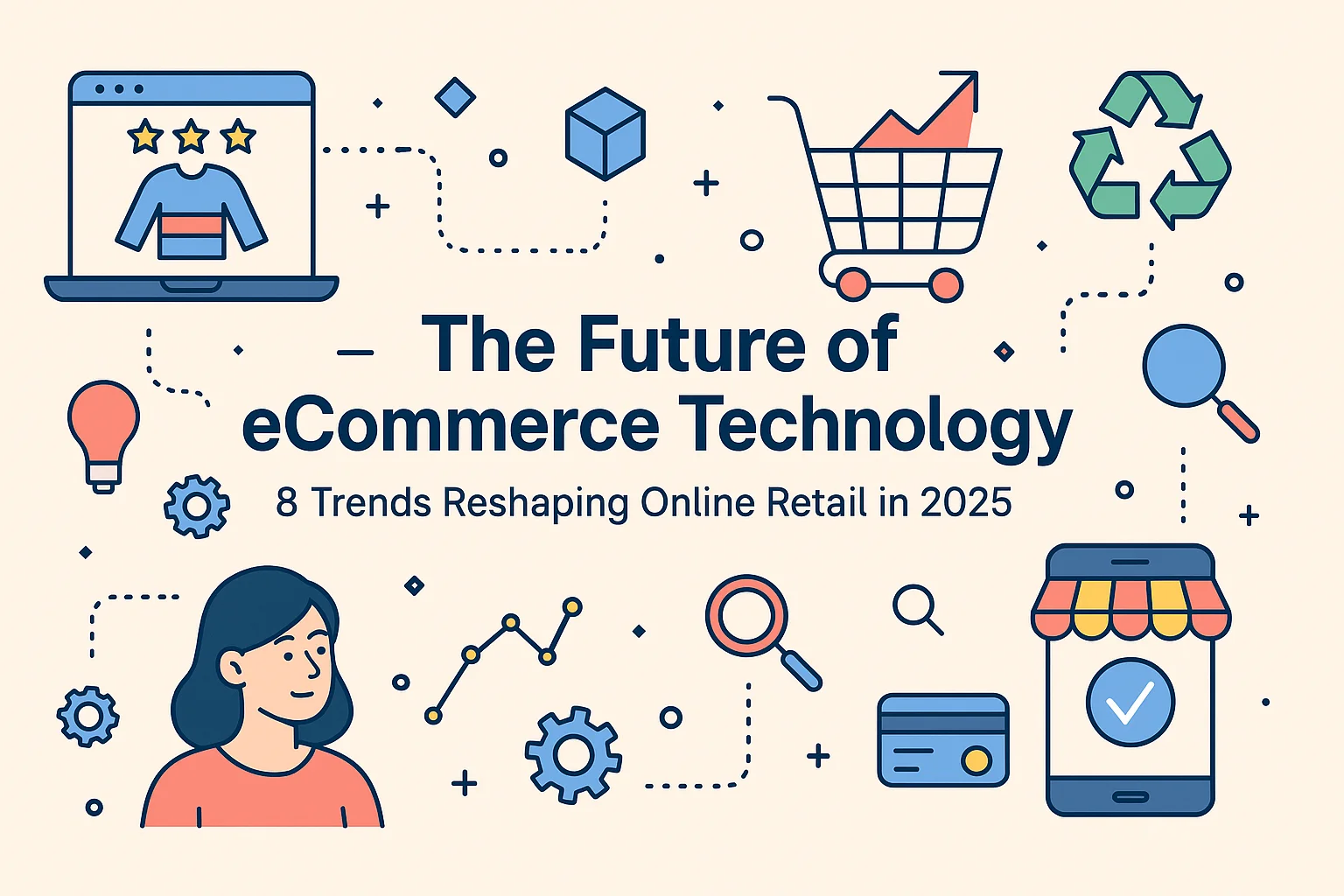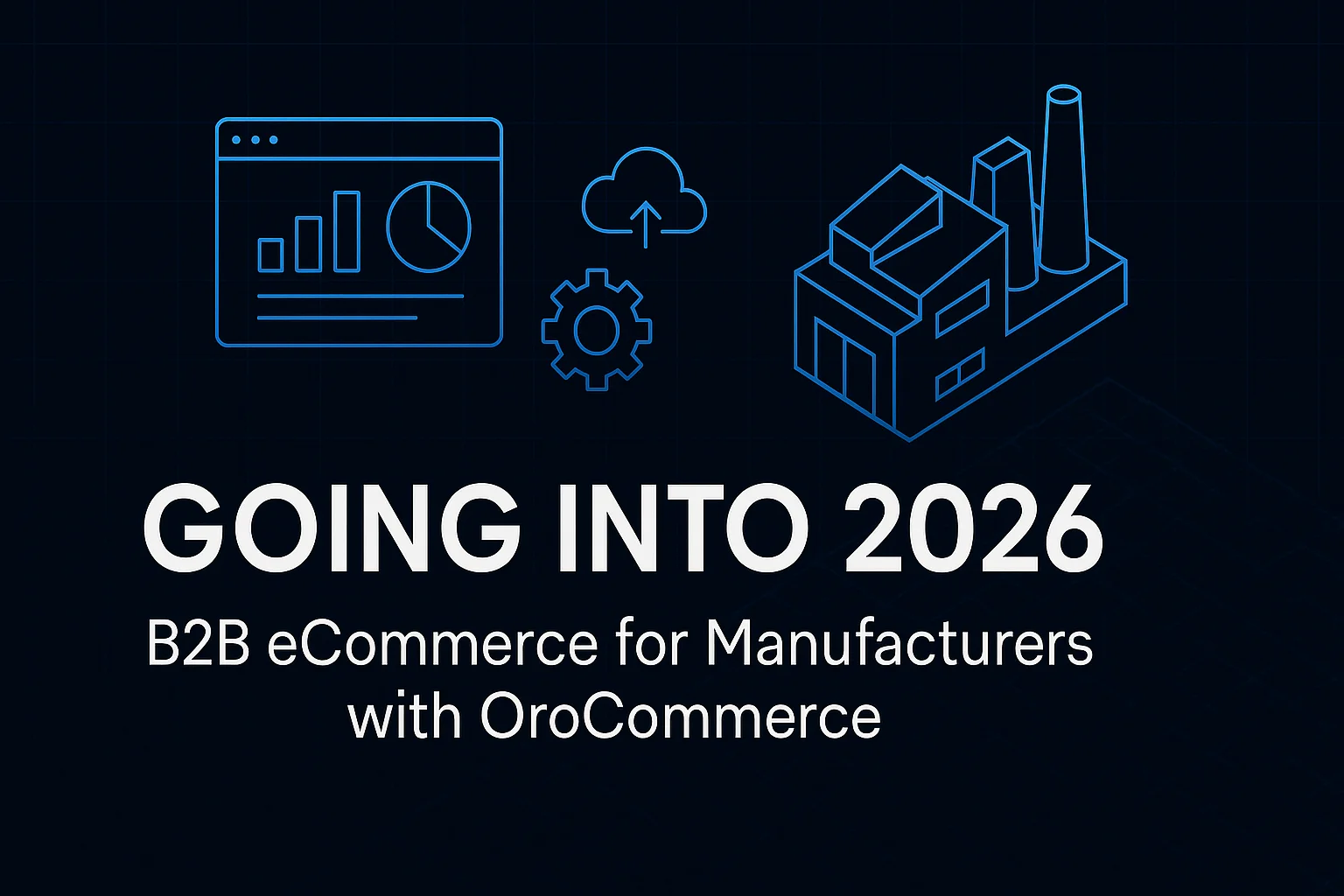
Manufacturing has shifted from brochure sites and price sheets to always-on digital selling. Buyers want fast answers, accurate availability, and clear pricing. Dealers want a single place to quote, order, and access approved assets. A well built ecommerce program gives both sides what they need and it gives your team cleaner data and lower cost to serve.
Why ecommerce matters now
Your customers already research online before they speak to sales. They compare specs, lead times, and total cost. If your site does not provide that information, a competitor will. Modern ecommerce is not only a checkout page. It is a customer workbench that supports research, configuration, quoting, ordering, and service.
What buyers expect from a manufacturer site
Customers expect rich product data, spare parts, accurate lead times, and a path from RFQ to order without email chains. They want to see their pricing, their terms, and their order history. They also expect training content, installation guides, and warranty support. When you meet these expectations, conversion improves and support tickets drop.
Growth levers that work in manufacturing
1) A real digital catalog
Start with a complete, searchable catalog that carries attributes engineers and buyers actually use. Show compatible parts and recommended accessories. Link spec sheets, CAD files, MSDS, and installation guides so buyers do not need to ask for them.
2) Account based pricing and contract logic
Manufacturers sell on negotiated terms. Your store must reflect contracts by account, region, and tier. That means multiple price lists, effective dates, and approvals. When customers see the right price on the first visit, they move faster.
3) Quotes, RFQs, and negotiated orders
B2B buyers still need to negotiate. Support quote creation, approval, counter offers, and a clean convert-to-order flow. This shortens cycle time and keeps a full audit trail for finance and sales operations.
4) Product configuration and guided selling
Use rules based configuration and CPQ style logic to reduce errors and increase attach rates. If a part is out of stock, present alternates with clear tradeoffs. If an accessory improves performance, suggest it where it matters.
5) Real time availability and lead times
Integrate ERP and WMS so the store shows credible stock and ETAs. Buyers plan production around dates. Accurate visibility builds trust and reduces cancellations.
6) Self service service
Spare parts, warranty registration, and RMA submission should live inside the account portal. Capture serial numbers, photos, and failure codes up front. Your support team will resolve cases faster.
7) Dealer and distributor portals
Give partners a secure portal that centralizes pricing, assets, training, co-op rules, and MAP. Dealers sell more when they can quote, check availability, and download the right materials in one place. Your brand stays consistent and your channel stays aligned.
8) Analytics and continuous optimization
Measure how buyers search, what they compare, and where they drop off. Use those signals to improve facets, tune recommendations, and prioritize content. Treat the store as a product that evolves each month.
How ecommerce improves the customer experience
A good program reduces friction in every step. Buyers can find the right product, confirm fit, and see a reliable date before they speak to anyone. Dealers log in and get their price, their assets, and their order status. Service teams collect the right information automatically and close cases sooner. The site becomes the daily system of record for your customers and your staff.
The data foundation
Manufacturing commerce lives or dies on data quality. Integrate the store with ERP for items, stock, pricing, and invoices. Connect a PIM for attributes and media. Tie in CRM for account hierarchies and approvals. Keep a single source of truth and let ecommerce be the front door.
A practical 90 day roadmap
Days 1 to 30: Discovery and design
Identify customer journeys, map contract rules, define KPIs, and align on data ownership. Prioritize the first two or three flows that will move numbers.
Days 31 to 60: Build the core
Stand up the catalog, account pricing, and RFQ to order. Connect ERP for stock and lead times. Load priority assets and documents. Put basic dashboards in place.
Days 61 to 90: Pilot and optimize
Invite a small group of accounts and dealers. Fix friction quickly. Add spare parts and warranty. Tune search, facets, and recommendations. Lock in the adoption plan.
Why we standardize on OroCommerce for manufacturers
OroCommerce was built for B2B. It handles corporate account hierarchies, multiple price lists, RFQ and quoting, granular roles, and workflow automation without a mountain of custom code. It also plays well with ERP, PIM, WMS, and tax and shipping services through robust APIs. For dealer networks, multi website and multi organization support keeps regions and brands under one back office.
How Metrotechs implements and operates the stack
We combine architecture with hands on delivery so your team gets a system that runs.
-
Platform and integrations: OroCommerce as the commerce core, integrated with ERP, PIM, WMS, CRM, and tax and shipping providers
-
Cloud hosting: AWS with EC2 or Lightsail, RDS or Aurora, Redis, S3, CloudFront, Route 53, and WAF
-
Automation: n8n and AI powered workflows for order ops, content enrichment, lead routing, and service
-
Performance and security: CI and CD, monitoring, alerting, and access hygiene
-
Adoption: in portal tours, training paths, and a dealer success scorecard
What to measure
A few metrics tell the story. Digital revenue by segment. Quote to order time. Self service rate for tracking, invoices, and RMAs. Fill rate and lead time accuracy. Attachment rate for accessories and service plans. These numbers inform the next sprint and prove the program is working.
The takeaway
Manufacturers win when ecommerce becomes the easiest way for customers and partners to do business. Start with the core journeys, connect the data, and deliver a portal that people want to use. The result is higher sales, lower support load, and a brand that feels simple to work with.
Ready to build your manufacturing ecommerce program
Metrotechs designs and implements OroCommerce on AWS for manufacturers that want a smarter, more scalable foundation. If you want a plan that moves numbers in the next ninety days, let’s talk.



